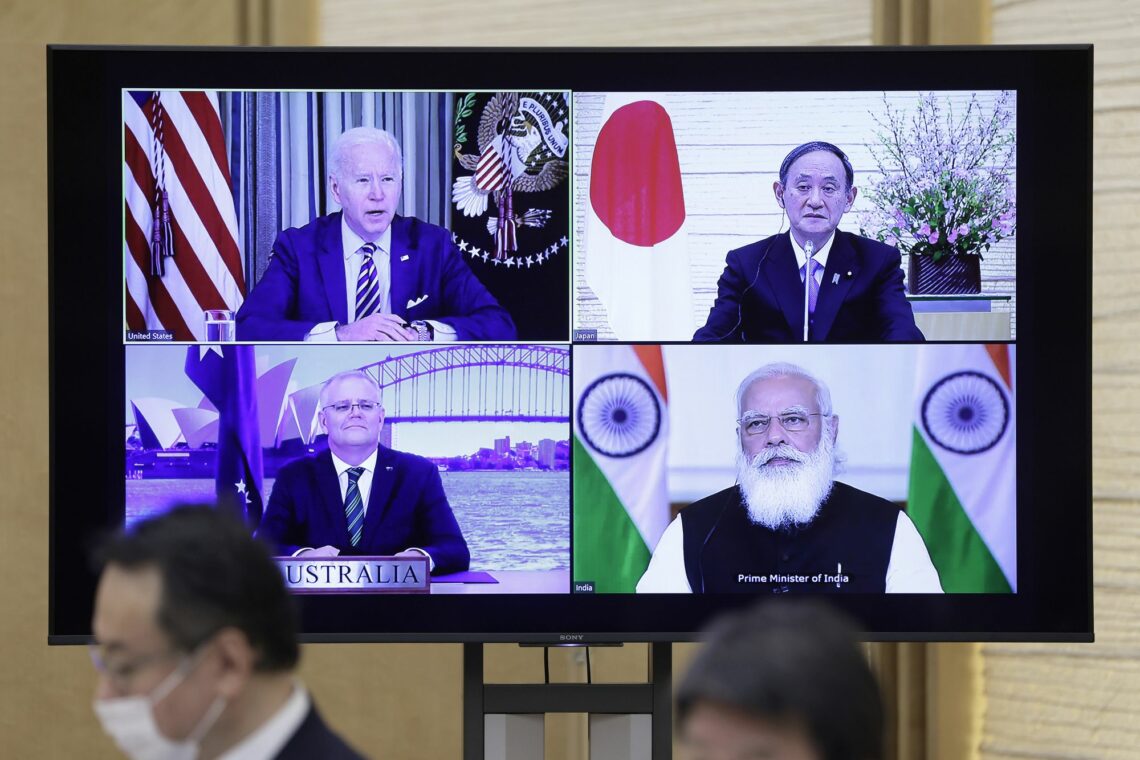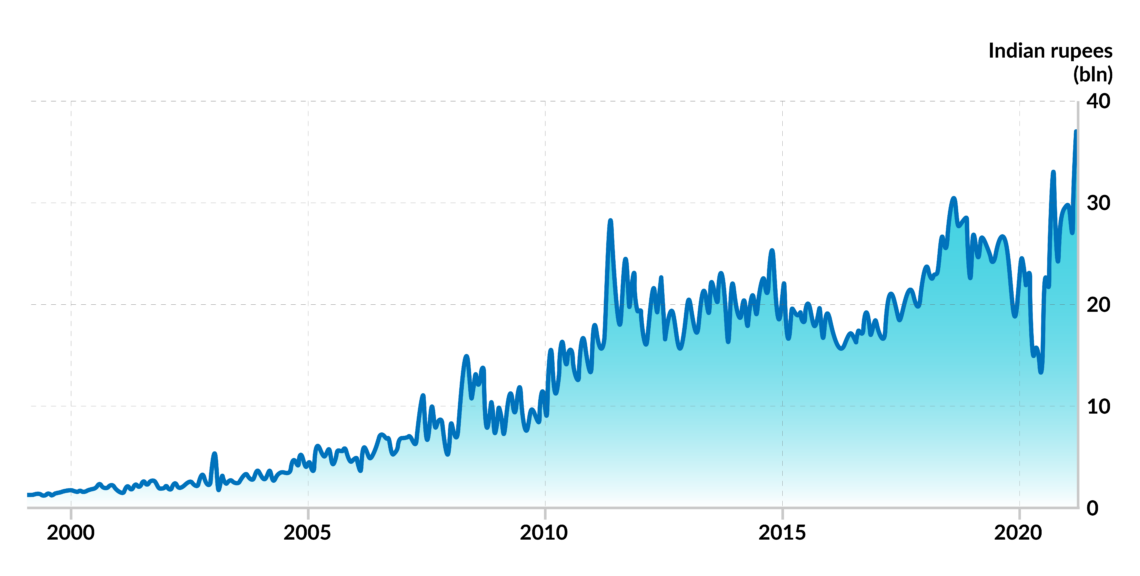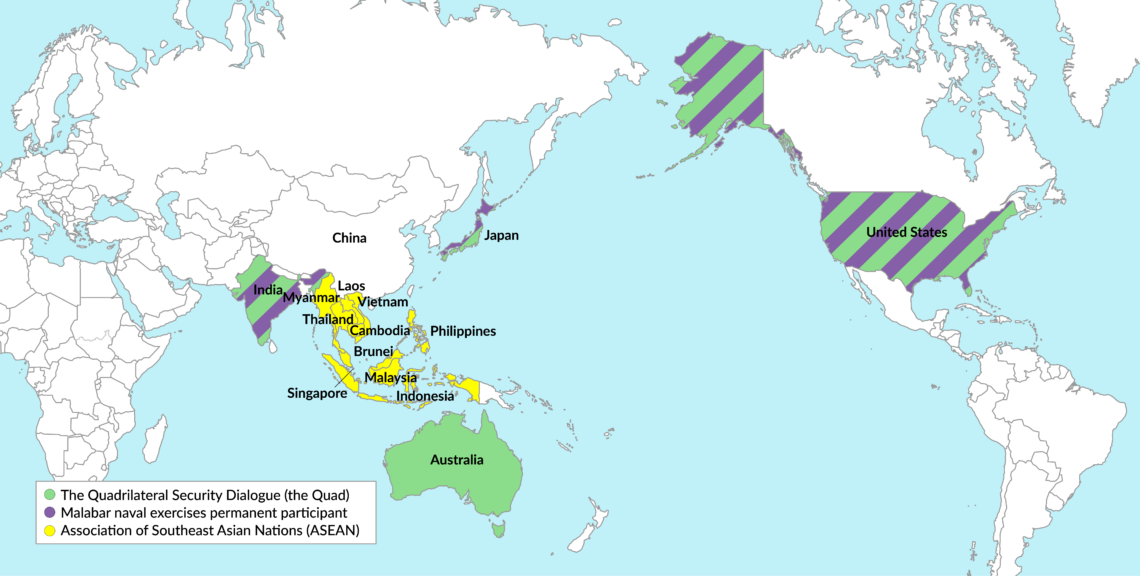India’s growing interest in Taiwan
Until recently, Taiwan barely appeared on India’s geopolitical radar. Yet the subcontinent has become a beneficiary of the island’s trade. If a cross-strait conflict over Taiwan were to erupt, would India get involved?

In a nutshell
- Over recent years, India has begun to reconsider the role of Taiwan
- India wants to de-Sinicize its economy through a closer U.S. partnership
- New Delhi might engage in a military conflict over Taiwan in the future
Of the four members of the Quadrilateral Security Dialogue, India has the weakest relationship with Taiwan – geographically distant, economically unconnected (until recently) and politically isolated. New Delhi has therefore not given much thought to how it would react if a military conflict between the United States and China across the Taiwan Strait were to break out. However, as bilateral relations with the U.S. have begun to deepen, New Delhi is reconsidering the importance of Taiwan, especially in terms of technology and investment.
Facts & figures
The Quad
The Quadrilateral Security Dialogue, also known as “the Quad,” is an informal strategic dialogue including the U.S., India, Japan and Australia. It focuses on military collaboration in the Indo-Pacific region in the face of a rising China.
The degree to which India will involve itself in a Taiwan Strait crisis depends on three trajectories. One is the economic relationship between India and Taiwan. The second is the Indo-U.S. strategic relationship. The last is the growth of Indian military capacity, notably in the maritime sphere. As things stand now, none of these would point to India being a player in any crisis in the Western Pacific in the next five years. But a decade or more from now, the needle may have moved further eastward.
Economic partnership
In the past, though India and Taiwan had de facto diplomatic relations, most agencies in the Indian government barely recognized Taiwan as a separate country. Several years ago, India adhered so strictly to a “one China” policy that it did not recognize Taiwanese credit cards and banks. In 2018, the two countries signed a bilateral investment treaty to encourage commercial ties. From nearly zero, Taiwanese foreign direct investment (FDI) in India has increased to about $400 million and trade to about $7 billion. These numbers are heading for a quantum leap as Taiwanese firms like Foxconn and Wistron – contract manufacturers for electronics firms like Apple – are investing $1 billion in India to diversify their manufacturing away from mainland China.
Facts & figures

Taiwan’s 2016 New Southbound Policy initially reached out economically and politically to Southeast Asia but soon expanded to include India and its neighbors. The initiative has converged neatly with Indian policies to attract high-end electronic manufacturing. The combination is one reason so many Taiwanese firms are arriving in India. New Delhi is impressed with Taipei’s knowledge of domestic Chinese politics and its expertise in strategic technologies like semiconductors, which has laid the basis for expanded intelligence and security collaboration.
U.S. relations
The most important determinant of how India would respond to a Taiwan crisis is how close it moves to the U.S. over the coming years. India has a testy relationship with China but has been wary of aligning too closely with Washington. New Delhi has had doubts about the Americans’ long-term commitment to Asia and knows all too well that its long and mountainous border makes it vulnerable to Chinese military retaliation. India traditionally uses the threat of closer U.S. ties to extract concessions from China even while maintaining, to use its own language, maximum “strategic autonomy.” This stratagem has not stopped Beijing from provoking India at times, helping to ensure Indo-U.S. security cooperation has expanded over the past decade. Beijing’s belligerence has also made New Delhi less inhibited about interjecting itself, at least diplomatically, into issues that are highly controversial in China, like Tibet, Xinjiang, Hong Kong and Taiwan.
How India responds to a Taiwan crisis depends on how close it moves to the U.S.
The bilateral acceptance of the term “Indo-Pacific” as a strategic concept is one manifestation of this expanded cooperation, as is the rapid rise of the Quad. Whenever India and China have a military face-off, the U.S. is a key provider of intelligence and other support. U.S. and Indian naval ships operating together against China in a limited conflict remains out of the question for now. However, it is no longer seen as the impossibility it would have been even a decade ago.
Pacific push
India has been slowly expanding its perceived maritime sphere of interest from its exclusive economic zones to the Indian Ocean as a whole. Last month, Indian Foreign Minister Subrahmanyam Jaishankar said the “Indo-Pacific is a clear message that India will not be constrained between the Malacca Straits and Gulf of Aden. Our interests, our influence, our activities today go way beyond.”
Facts & figures

Until recently, while Indian naval vessels regularly exercise with the U.S. and Japan in the Pacific Ocean and visit countries like Vietnam and the Philippines, New Delhi has assumed the Pacific is beyond any realistic projection of its power. However, as China has expanded its footprint into the Indian Ocean, India has concluded that becoming more active in the Pacific is necessary to pressure China. It is also useful for New Delhi when it comes to influencing the decisions of the Quad. However, India’s navy and airpower will need to at least double before it can comfortably operate so far from home.
Scenarios
The primary external variables that would influence India’s response to a Taiwan Strait crisis would be the strength of the U.S. response and the degree of aggression displayed by China.
India's economic engagement
India has already begun a slow and painful process of trying to de-Sinicize its economy. It sees the slow-motion decoupling of the U.S. and China as a chance to capture some of the investment fleeing its eastern neighbor. But India is carrying out its own economic distancing from China, especially in critical infrastructure and overall Chinese investments. The worse the Taiwan situation is, the better chance of India to be an investment beneficiary.
In the case of an actual military conflict, India would probably follow the U.S. in imposing financial sanctions against China as it has done when the U.S. has imposed sanctions on Iran. If Taiwanese electronics investments in India are large and strategic enough, New Delhi could contemplate seizing some of these assets rather than letting them slip into Chinese hands following a Chinese takeover of Taiwan. Trade sanctions would be more difficult so long as critical Indian sectors like pharmaceuticals, renewable energy and automobiles remain dependent on Chinese components.
India's diplomatic engagement
Diplomatically, especially if China’s aggression is evident to all, India would be prepared to join in votes against China at the United Nations and other multilateral fora. At the same time, it would remain part of bodies such as the Shanghai Cooperation Organisation or the BRICS group of developing countries because it finds these diplomatically useful.
India's military engagement
India’s most limited moves would be in the military sphere. Even if its ambitious plans for a three-carrier blue-water navy were to materialize, India would deploy much of this force in the Indian Ocean to counter the growing Chinese presence. However, as it has done in the past when the U.S. has gone to war in the Persian Gulf or Afghanistan, India would consider mobilizing ships and aircraft to allow the U.S. to shift military assets from the Indian Ocean to the point of conflict.
A larger question would be whether India would feel confident and connected enough to Taiwan and the U.S. also to mobilize its air and land forces along the Chinese border. This would effectively pin down Chinese aircraft and some troops that would otherwise be deployed to the Pacific coast. Beijing currently has about 100,000 soldiers and 160 fighters deployed along the Indian border. Such a mobilization would be a significant step up for India in showing support for the U.S. and their joint vision of the Indo-Pacific but could happen only a few years in the future.
Even if it fell short of fighting, increasing friction over Taiwan would further push Asian geopolitics down the path of a black-and-white balance of power. The Quad armed forces would experience a much denser overlay of military and intelligence cooperation with full interoperability. It might also see new members like South Korea or Vietnam come knocking on the door. India’s past actions have shown that when confronted with Chinese aggression, even in the Western Pacific, it has been more invested in the idea of a counterbalance with American characteristics.








